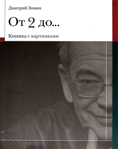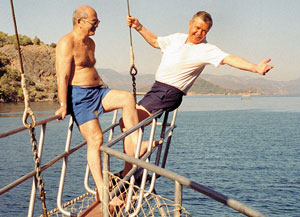 And since we got started on these very few successful businessmen from RTI, it would be a shame not to mention RTI veteran Vadim Zelenin Ц a colorful, energetic personality, very much to my liking.
And since we got started on these very few successful businessmen from RTI, it would be a shame not to mention RTI veteran Vadim Zelenin Ц a colorful, energetic personality, very much to my liking. Look how he could enjoy life.
The Zelenin family is known also because of VadimТs son, Dmitry, until recently a businessman Ц now the governor of the Tver region and the founder of the authoritative public organization, the Association of Managers.
Though the title of one of the last roundtables at the Association, УPower and Business United Against Corruption,Ф
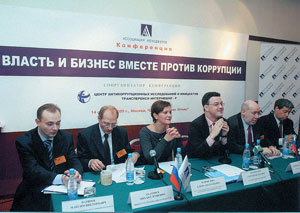 struck me as ambiguous Ц just the way it is worded reveals a lot about the particular character of our power. I kept the structure and paraphrased the title for the audience: УThe Rapists and the Raped United Against Rape.Ф This created some agitation in the seats, but no objections.
struck me as ambiguous Ц just the way it is worded reveals a lot about the particular character of our power. I kept the structure and paraphrased the title for the audience: УThe Rapists and the Raped United Against Rape.Ф This created some agitation in the seats, but no objections. It is remarkable that only 0.1% of the employees of an elite institute in the Military-Industrial Complex could create successful businesses and spare the state many hundreds, and later many thousands of financial dependants. And I read somewhere that in the United States about 4% of the working-age population own businesses - not including those that are family-owned. This is just some food for thought.
In MintzТ time I couldnТt even imagine hearing four-letter words in his or his deputiesТ offices. My other bosses, Neiman, Deriugin, Bakhrakh, also spoke in a similarly wholesome manner Ц hence my naive and short-lived faith in the good literary language style of all management.
I got to see Mintz in a role that he would rather not have performed in. In August of 1968, he stood on the steps of the Institute porch facing the courtyard and conducted a rally in support of Soviet troops invading Czechoslovakia. One look at him made it obvious that he was forced to do this.
For me, and I was not alone, the events of the fall of 1968 dispelled any final Young Communist illusions there may have been concerning our political system.
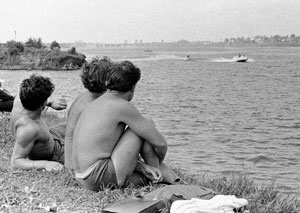
Mintz had his eye on two of the younger employees at RTI when thinking about a possible successor: Atlant Vasilyev from the Accelerator Department,
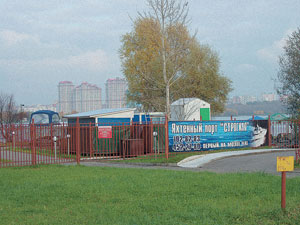 and R. from the Radio-Radar Dept. Now I cannot remember where I found this out, but I am quite sure of it. I think Mintz himself spoke about it.
and R. from the Radio-Radar Dept. Now I cannot remember where I found this out, but I am quite sure of it. I think Mintz himself spoke about it. I never knew Atlant Vasilyev very well Ц then or now Ц but destiny brought me pretty close to R. We were practically the same age Ц I was just a year younger. Not only did I start my work at RTI as one of the leading engineers in his engineering design headquarters, but for several years we water-skied together, which at the time was a novel sport.
A mini-workshop for manufacturing home-made towboats out of epoxy offered at the Serebrianny Bor lifeguard station. R. was a hot-shot at this, too.
You can still see our crane for lowering motor boats into the water at this life guard station.
Life Guard station Serebrianny Bor. 2004. Almost 40 years ago we often spent whole days and nights here, putting together motorboats with epoxy in these sheds. I havenТt been there since. But nothing has changed there! And the crane was built with money meant for anti-missile defense.
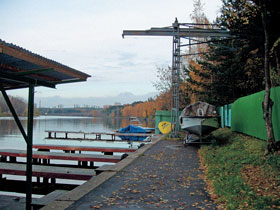
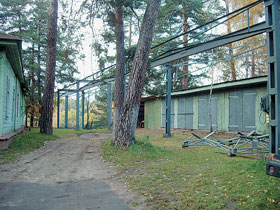
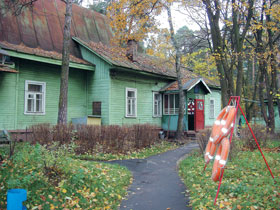 ЕI was among the few in attendance at the funeral service for R. at All-Saints Church near Sokol Metro station in December, 1999. I was a little bit surprised by his being buried in church. It didnТt seem in keeping with his character. Or maybe I never knew his true view of the world, or perhaps it drastically changed in old age.
ЕI was among the few in attendance at the funeral service for R. at All-Saints Church near Sokol Metro station in December, 1999. I was a little bit surprised by his being buried in church. It didnТt seem in keeping with his character. Or maybe I never knew his true view of the world, or perhaps it drastically changed in old age.
Ever since the first days we met, R. impressed me with his technical prowess, his fountain of interesting ideas, his ingenuity, and the crazy energy with which he galvanized our entire group of lead engineers. I still have fond memories of the engaging sweatshop atmosphere while working with R. I recall his brilliant polemic speeches in defense of this or that technical solution during Scientific and Technical Council meetings and various other meetings, on, say, the adequacy of impulse versus continuous radar operation (Oh, the infancy of radio radars!).
At the same time, R. became increasingly intolerant and rude toward the directors of other departments. The strained relationship between the Chief Design Engineer and the heads of most of the InstituteТs services was turning into a considerable hindrance to our work.
Mintz was deeply affected by the unseemly behavior and treachery of one of his favorites, who was experiencing a rare case of letting his passion for his job turn into hysterical, immoral and paranoid fanaticism and aggression.
This was very traumatic also for those of us who were R.Тs colleagues. Almost to a man, we had initially fallen in love with our brilliant Chief Design Engineer.
In 1965 he was relieved of his duties, and at the end of the 60Тs he left RTI, or rather was asked to leave. He went to work for NIIRP, where a series of scandals followed.
The scandal with R. also cost the meek Kelzon his position as Department head.
In 1970, Mintz resigned over his objections to the subordination of RTI to a newly founded entity, CNPO Vympel, and on December 24, 1974 he passed away.
